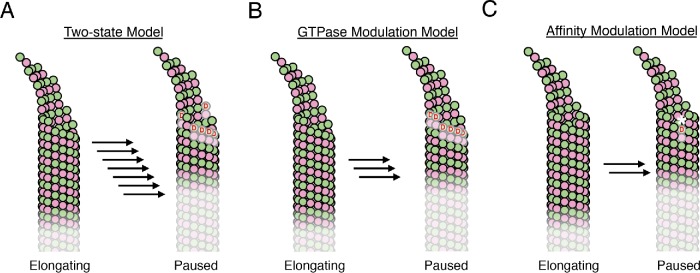FIGURE 7:
Cartoon illustrating some consequences of the different models. (A) In the two-state model, multiple protofilaments with exposed terminal GDP-tubulin tend to be required for MT pausing and catastrophe. Individual GDP-terminated protofilaments can be covered by subsequent associations of GTP-tubulins above and adjacent to the GDP-site (unpublished data), so the exposure of multiple GDP-terminated protofilaments typically requires multiple steps (black arrows) and is concentration-dependent. In these cartoons the size of the GTP-cap is represented by darker shading and becomes smaller in the paused state. (B) In the neighbor-stimulated GTPase model, the local amplification of GTPase makes developing a patch of GDP-terminated protofilaments more likely, and consequently it can occur in fewer concentration-dependent steps (fewer arrows than in A). (C) In the long-range affinity-modulation model, a single GDP-terminated protofilament is harder to cover (indicated by a white asterisk) because of the longer-range effect on sites adjacent to the capping site. This amplification of the impact of an individual GDP-terminated protofilament also reduces concentration dependence.

